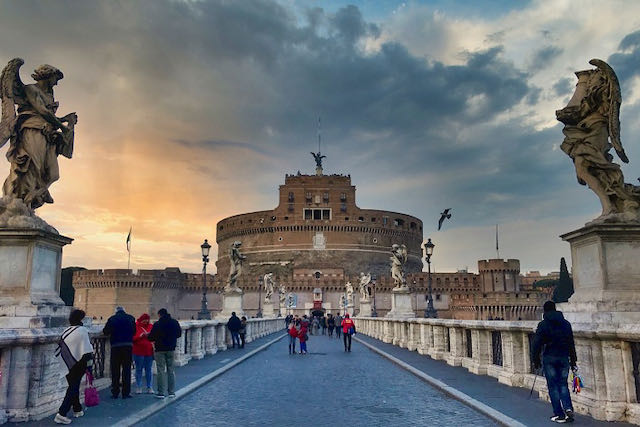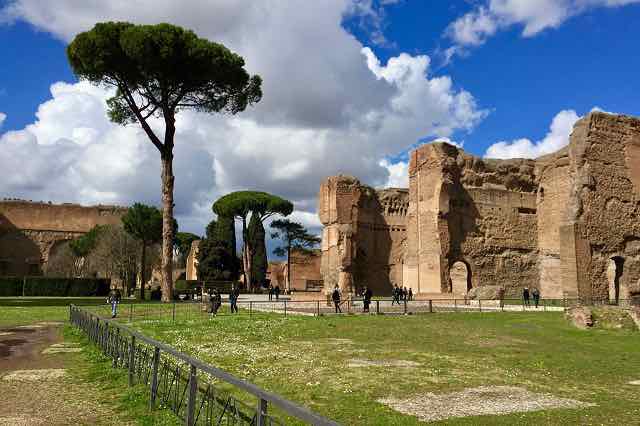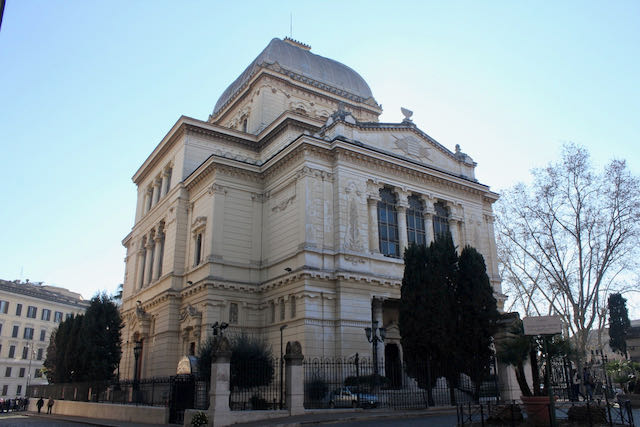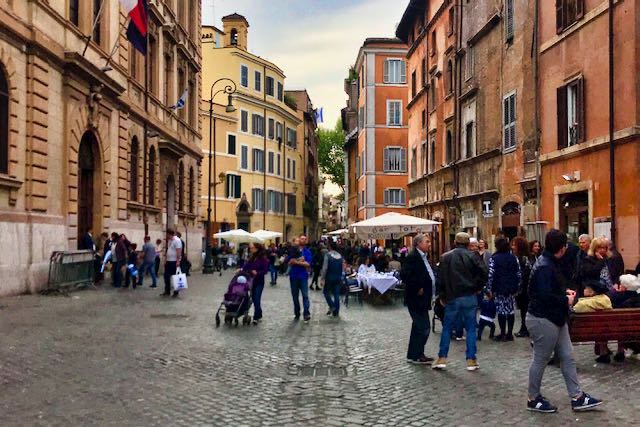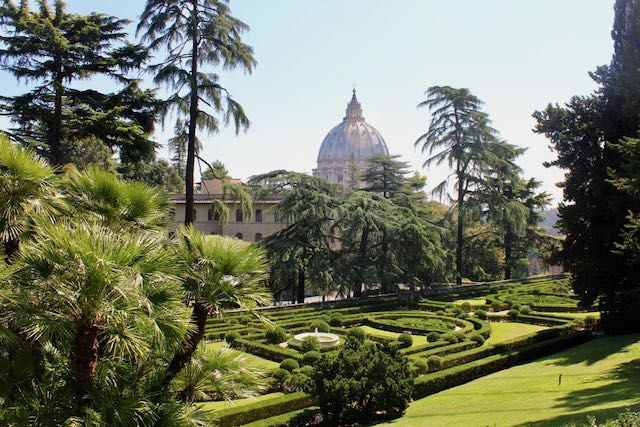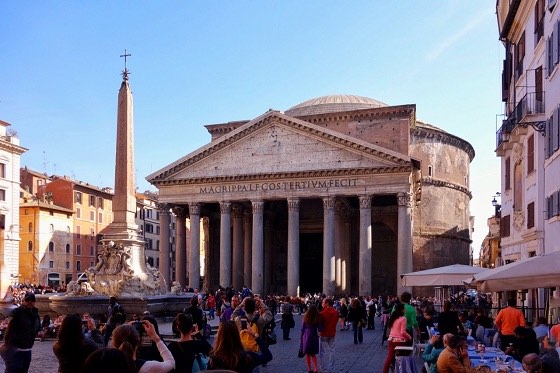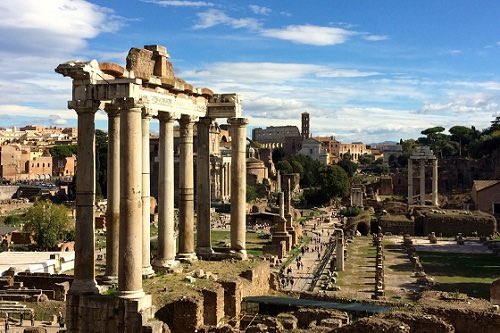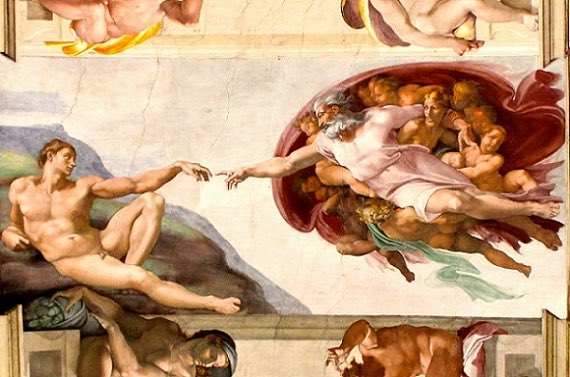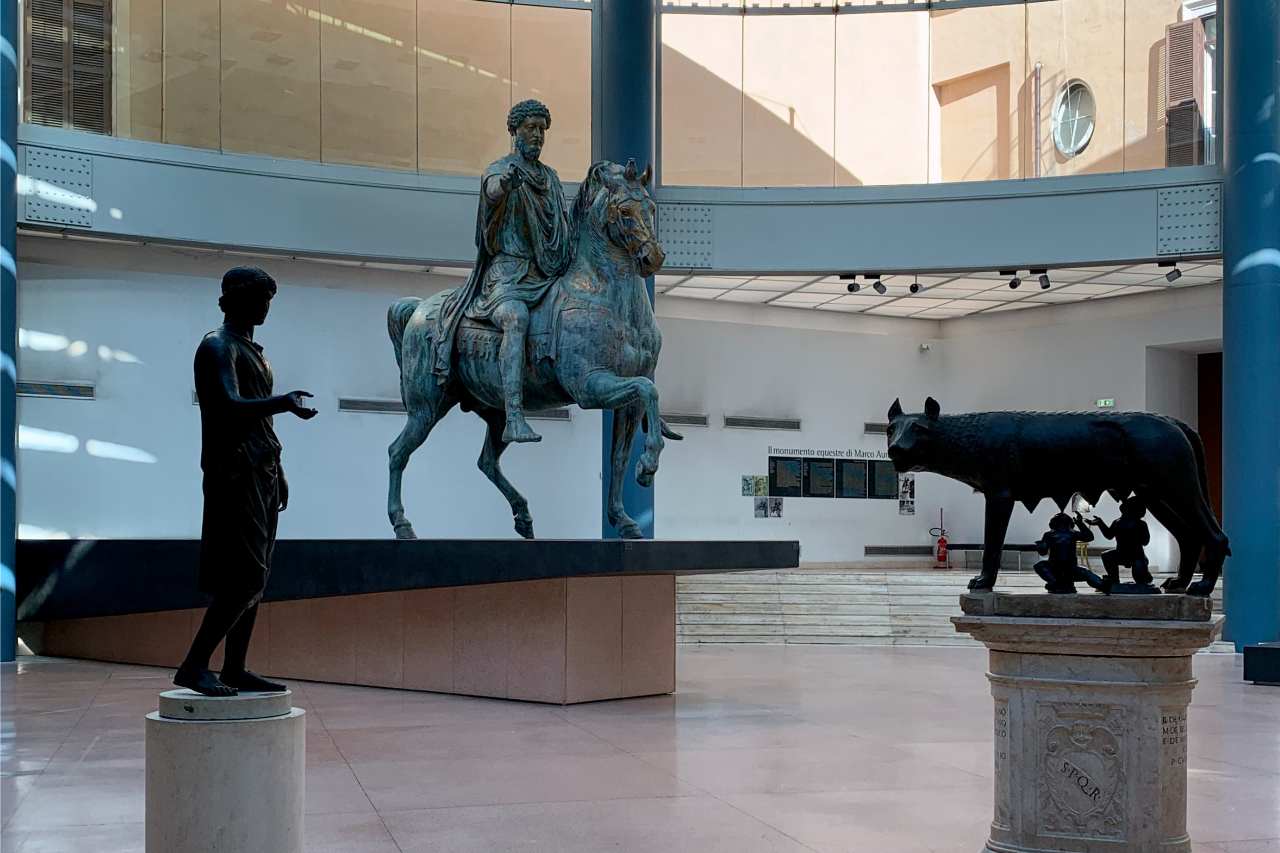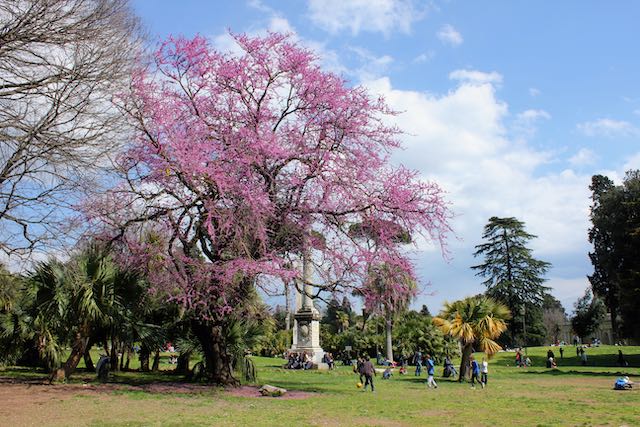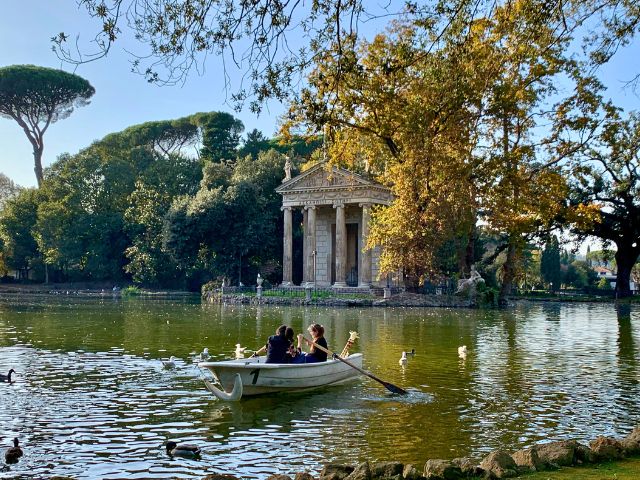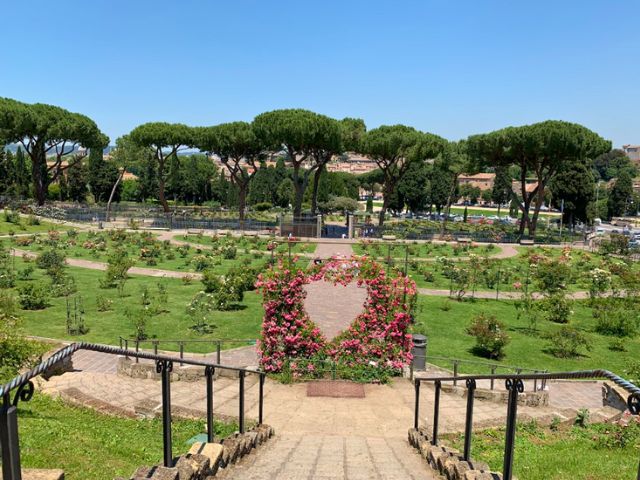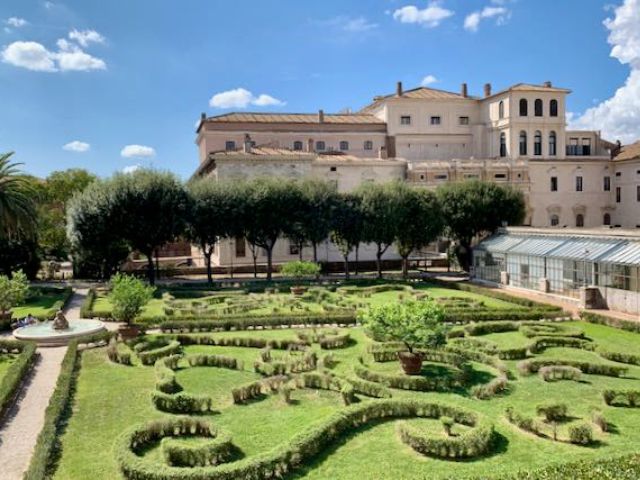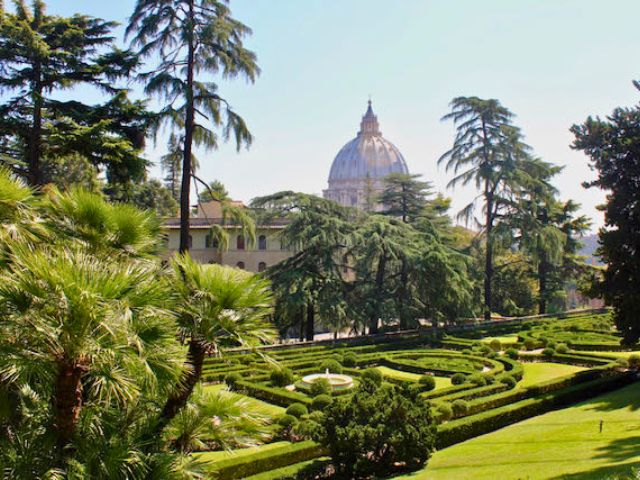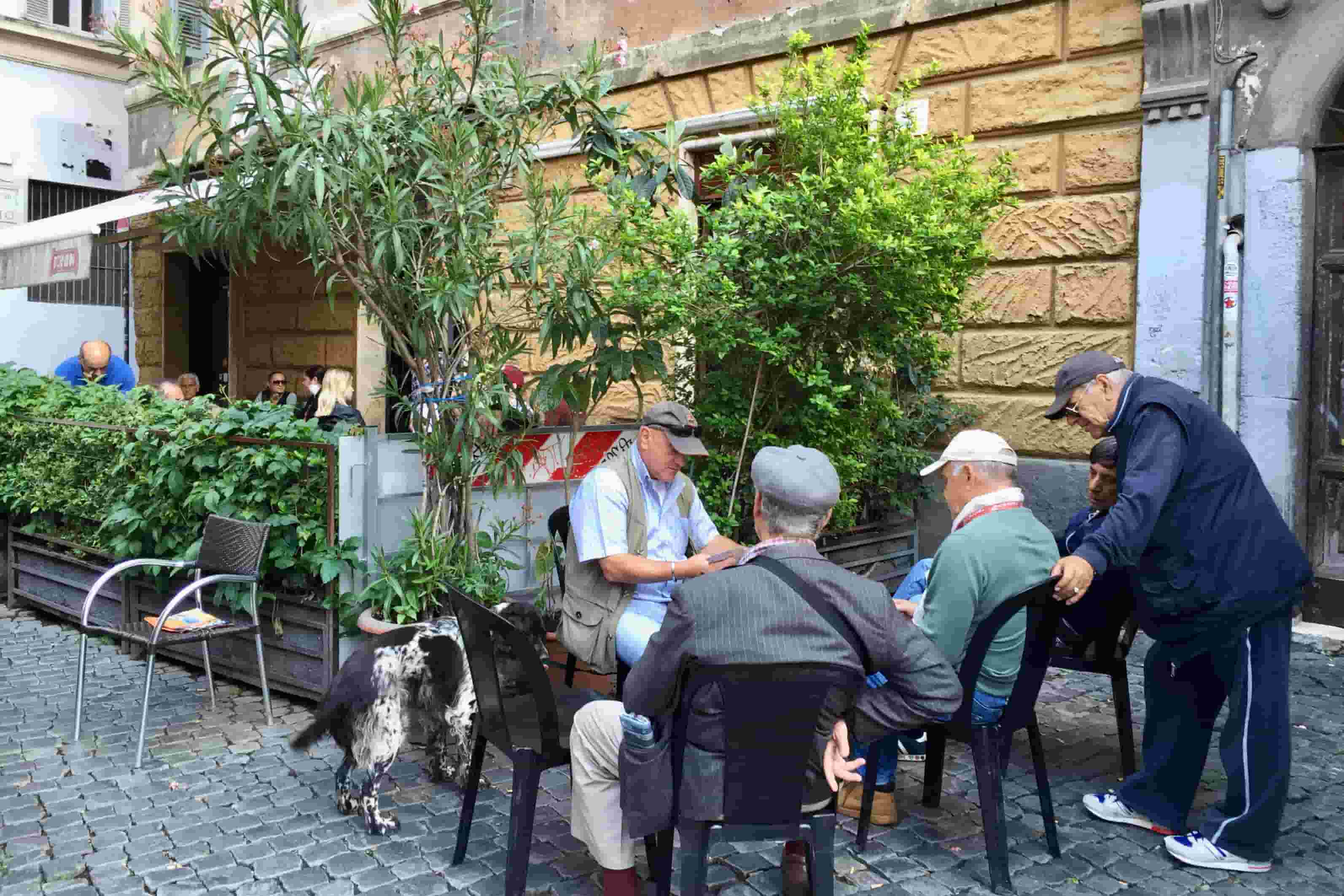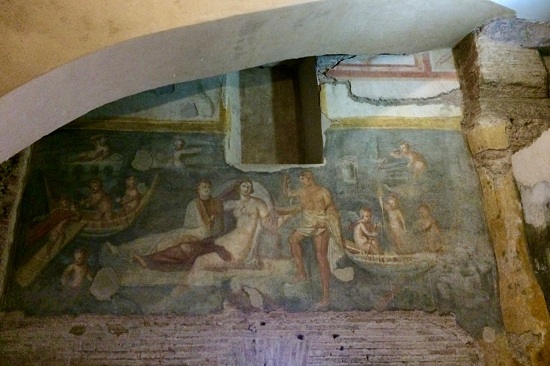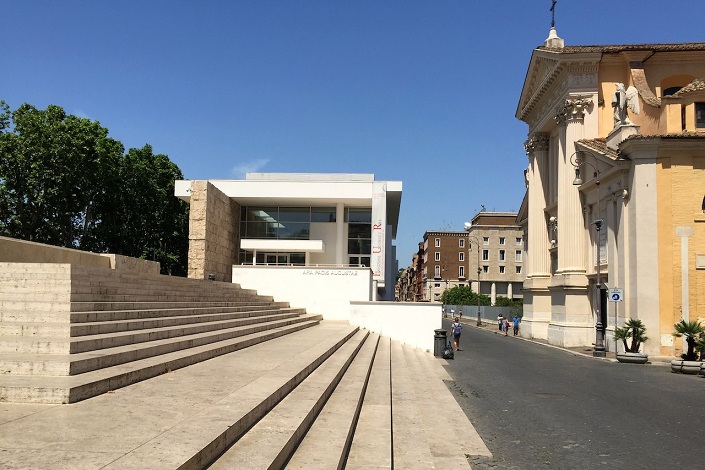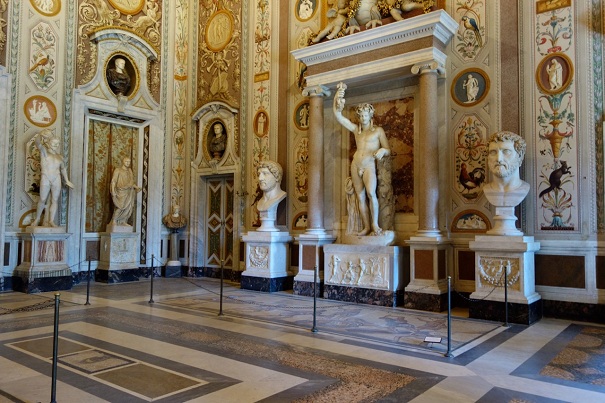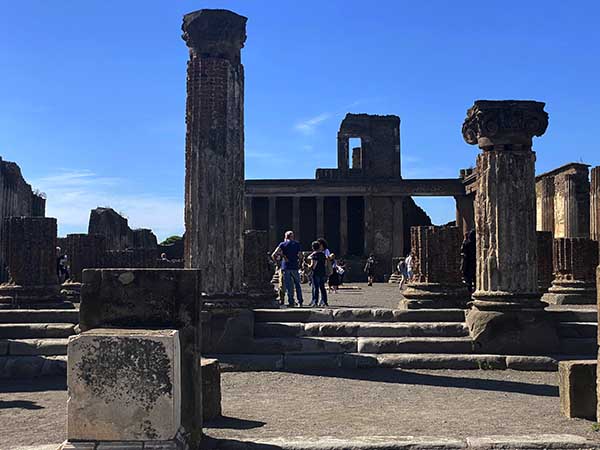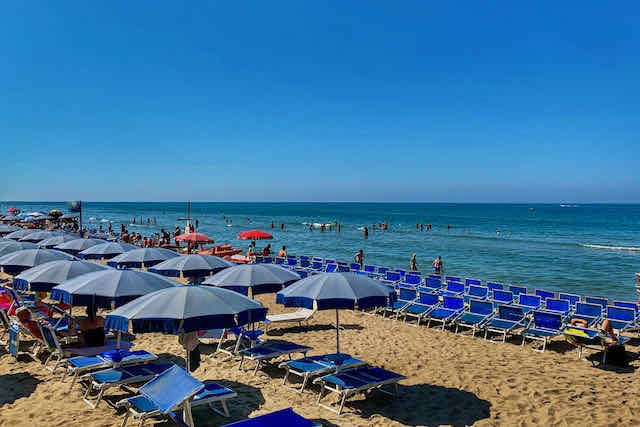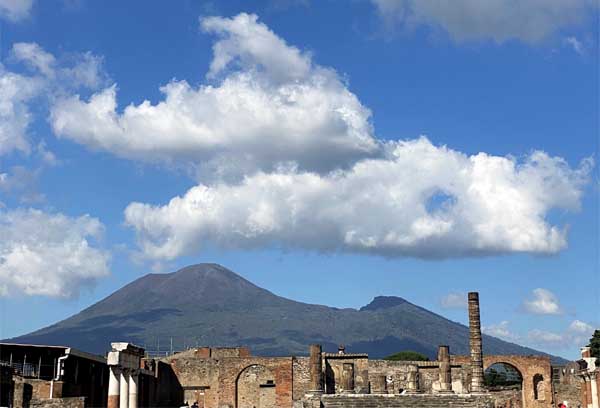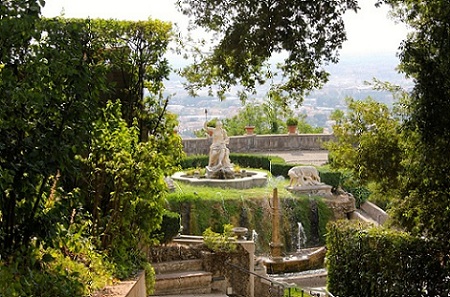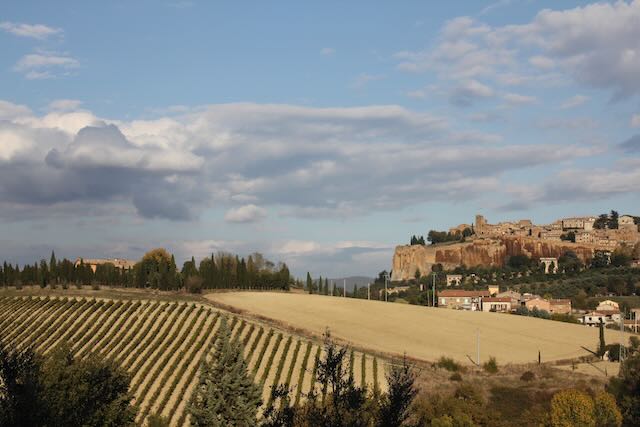- Sign up & get a FREE ebook Subscribe NOW!
- Romewise Home Page
- What to Do in Rome
- rome the second time
Rome the Second Time - 15 Amazing Things to See and Do
Visiting Rome the second time, or even the third or fourth?
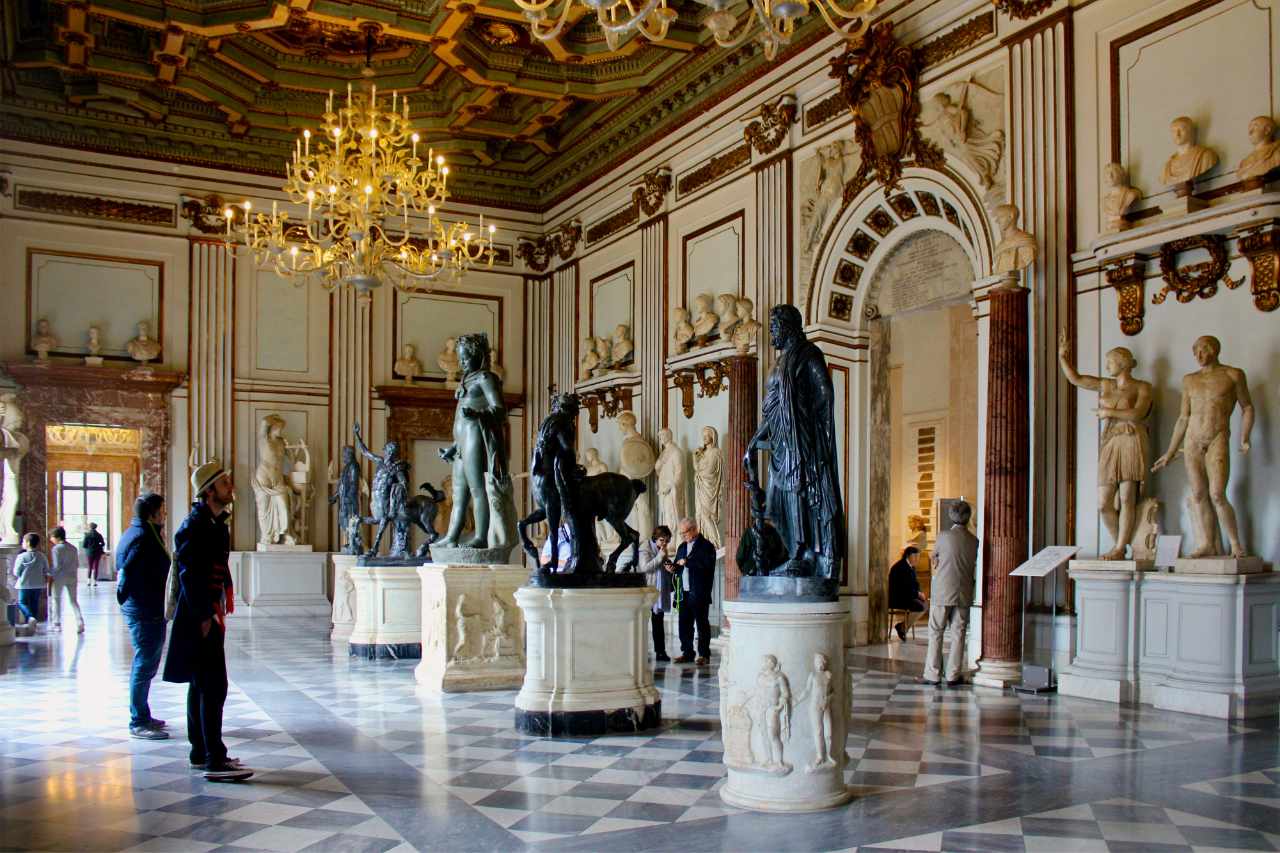 Visiting Capitoline Museums should be high on your list of things to see in Rome, especially on your 2nd visit!
Visiting Capitoline Museums should be high on your list of things to see in Rome, especially on your 2nd visit!Wondering what to do once you've hit all the must-see sites on the first-timer's itinerary?
The curious traveler is spoiled for choice!
15 things to see and do in Rome the second time - everything you need to know
Did you see all the main sights of the Eternal City when you visited for the first time?
Have you ticked the Colosseum, Vatican, Pantheon and Spanish Steps off your list?
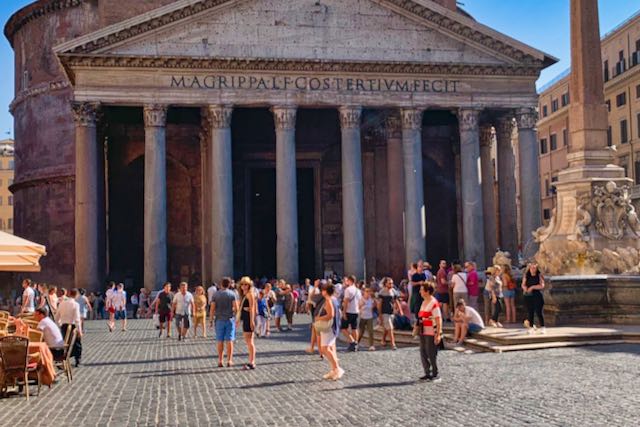 Hopefully, you visited the Pantheon on your first visit to Rome. (If you didn't, you should definitely add this to your list for your second visit!)
Hopefully, you visited the Pantheon on your first visit to Rome. (If you didn't, you should definitely add this to your list for your second visit!)On a second visit to Rome, there's still so much to explore.
Rome the second time is the perfect opportunity to learn more about cultural and artistic Rome, Roman history of World War II, to explore some of the less-visited (and less crowded!) ancient ruins, and to visit bustling local neighborhoods where only Italians eat.
On this page, we'll go over some of the best things to see and do in Rome the second time (or 3rd or 4th!) once you've seen the most popular attractions:
- Head to the Appia Antica for catacombs and nature
- Explore Castel Sant'Angelo
- Soak up stunning art in the Galleria Doria Pamphilj
- Get more Ancient Rome at the Baths of Caracalla
- Head underground to visit the Domus Aurea
- Wander the Jewish Quarter
- Visit the Vatican Gardens
- Take a cooking class or food tour
- Visit the Capitoline Museums, the oldest in the world
- Discover the Villa Torlonia and its park and wonderful museums
- Get to know Trastevere and its winding back streets and stunning churches
- See inside the Roman Houses at Celio
- Check out the Mausoleum of Augustus and the Ara Pacis
- Fill up your senses with art at the Galleria Borghese
- Journey out of town for a day trip
Head to the Appia Antica
A great place to start is the Via Appia Antica, or the Appian Way, one of the earliest and most important roads in Ancient Rome.
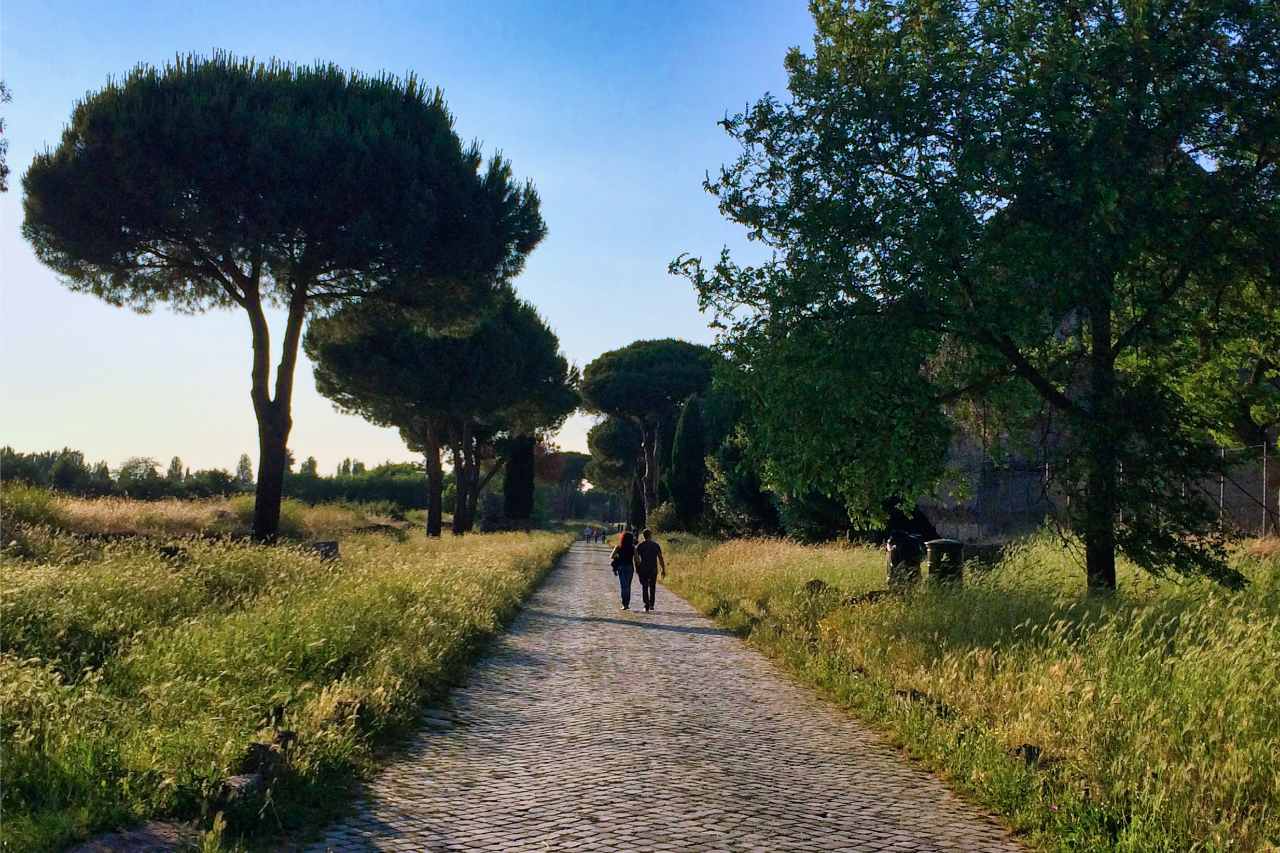 The Appia Antica is a great place to visit any time, and it also makes for a quieter, more relaxed Roman experience.
The Appia Antica is a great place to visit any time, and it also makes for a quieter, more relaxed Roman experience.This road stretches from Rome to Brindisi and is lined with monuments, tombs, and ruins, making it a must-visit for history lovers.
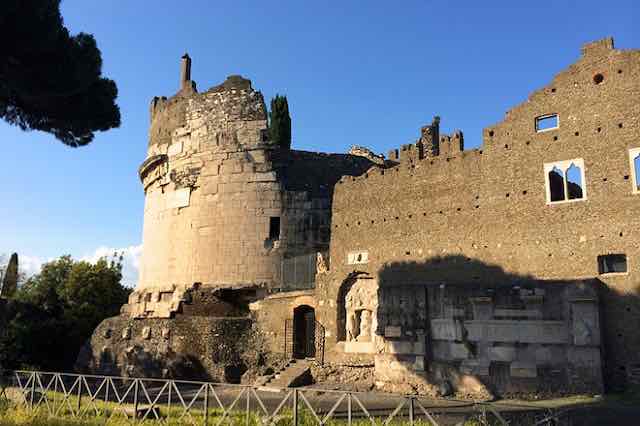 Appia Antica, the ancient Roman road, is a wonderful place to explore ancient Roman architecture like the Tomb of Caecilia Metella
Appia Antica, the ancient Roman road, is a wonderful place to explore ancient Roman architecture like the Tomb of Caecilia MetellaTake a tour of the ancient catacombs, visit the Caffarella park for a picnic, or take your friends on a bike tour.
 The Appian Way is a great place to go for a bike ride in Rome. Many parts of it are traffic-free, and you'll see a lot of Roman ruins and plenty of nature, too!
The Appian Way is a great place to go for a bike ride in Rome. Many parts of it are traffic-free, and you'll see a lot of Roman ruins and plenty of nature, too!💀 Discover the secrets of Rome's catacombs and most famous crypt 💀
Venture into ancient catacombs where early Christians found refuge, walk along the historic Appian Way, and brace yourself for the eerie Capuchin crypt—a unique reminder of life's fragility, adorned with monks' bones.
With comfortable minibus transport, this is a memorable dive into Rome’s mysterious past.
Explore Castel Sant'Angelo
Castel Sant’Angelo is an imposing fortress on the banks of the Tiber river.
Built by Emperor Hadrian as his mausoleum in the 2nd century, it was later adapted into a fortress and has been used for various purposes over the centuries.
The beautiful ancient Angel Bridge stretches out in front of it, making it easy to reach from the other side.
(The bridge itself is also from the time of Hadrian but the angels are a 17th-century addition.)
I find it's an often over-looked monument but it's really one of the best ways to understand Rome's history through its architecture.
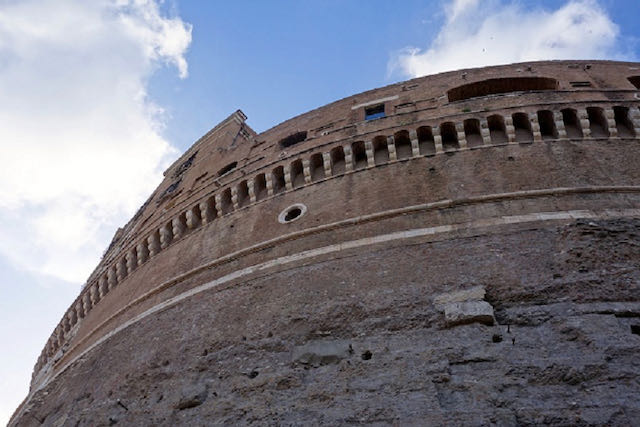 When you get up close to Castel Sant'Angelo, you can see the architectural details that show its progression from an ancient Roman mausoleum to a fortress and eventually to a papal party palace in the Renaissance.
When you get up close to Castel Sant'Angelo, you can see the architectural details that show its progression from an ancient Roman mausoleum to a fortress and eventually to a papal party palace in the Renaissance.You can easily visit without a tour, although a tour would bring all those fascinating and sometimes gory details to life.
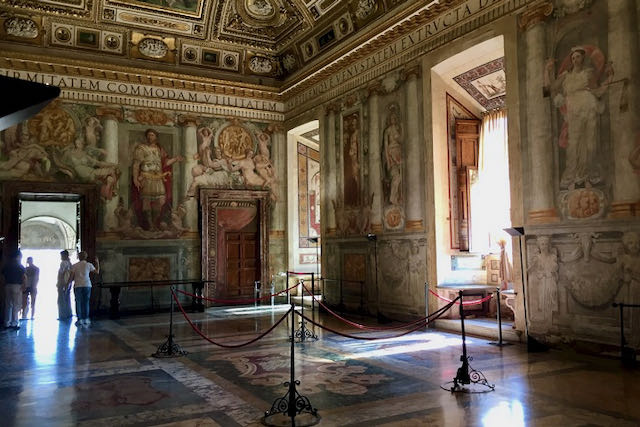 Castel Sant'Angelo was once used as a Papal residence and party palace, and this stunning Renaissance-era ballroom is one of the things you'll see on a visit here.
Castel Sant'Angelo was once used as a Papal residence and party palace, and this stunning Renaissance-era ballroom is one of the things you'll see on a visit here.Today, visitors can explore its history and climb to the top of this impressive building for stunning views of Rome.
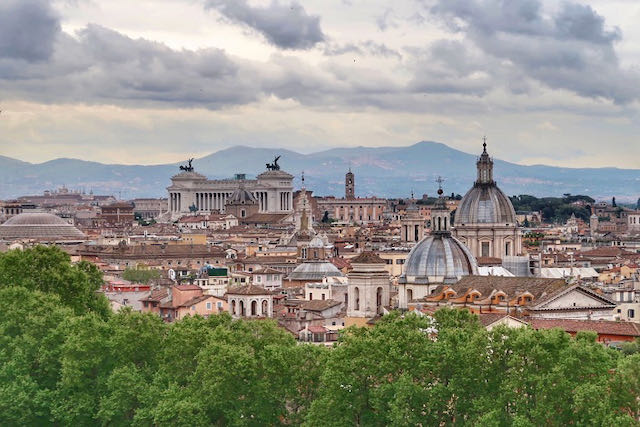 One of the best parts about visiting Castel Sant'Angelo is getting to see the views like this from the roof.
One of the best parts about visiting Castel Sant'Angelo is getting to see the views like this from the roof.Soak up spectacular art in the Galleria Doria Pamphilj
The Galleria Doria Pamphilj is another museum in Rome I find under-visited, but it should definitely be on your list, especially if you are an art-lover.
Inside this wonderful gallery visitors can admire masterpieces by Italian and international masters including Caravaggio, Bernini, Breughel, Titian, and many others.
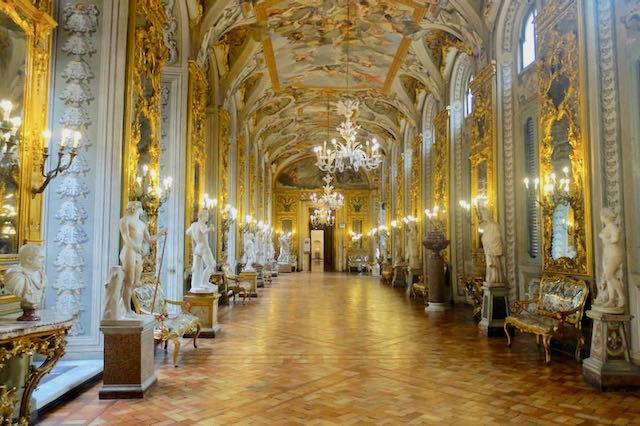 This room alone is worth a visit to the Galleria Doria Pamphilj. But there are other rooms and halls with a wealth of art to explore as well!
This room alone is worth a visit to the Galleria Doria Pamphilj. But there are other rooms and halls with a wealth of art to explore as well!The hall of mirrors is like a mini-Versailles.
 This is one of many rooms in the Galleria Doria Pamphilj that is a feat for the eyes - and it's almost never crowded.
This is one of many rooms in the Galleria Doria Pamphilj that is a feat for the eyes - and it's almost never crowded.You will be amazed to realize this museum is smack in the center of Rome, and hardly anyone seems to know about it!
 The Café Doria is a delightful, serene place to enjoy coffee, tea, breakfast or lunch.
The Café Doria is a delightful, serene place to enjoy coffee, tea, breakfast or lunch.Bonus tip, don't miss their lovely cafe.
You can also enjoy a glass of wine or spritz right in the cloister.
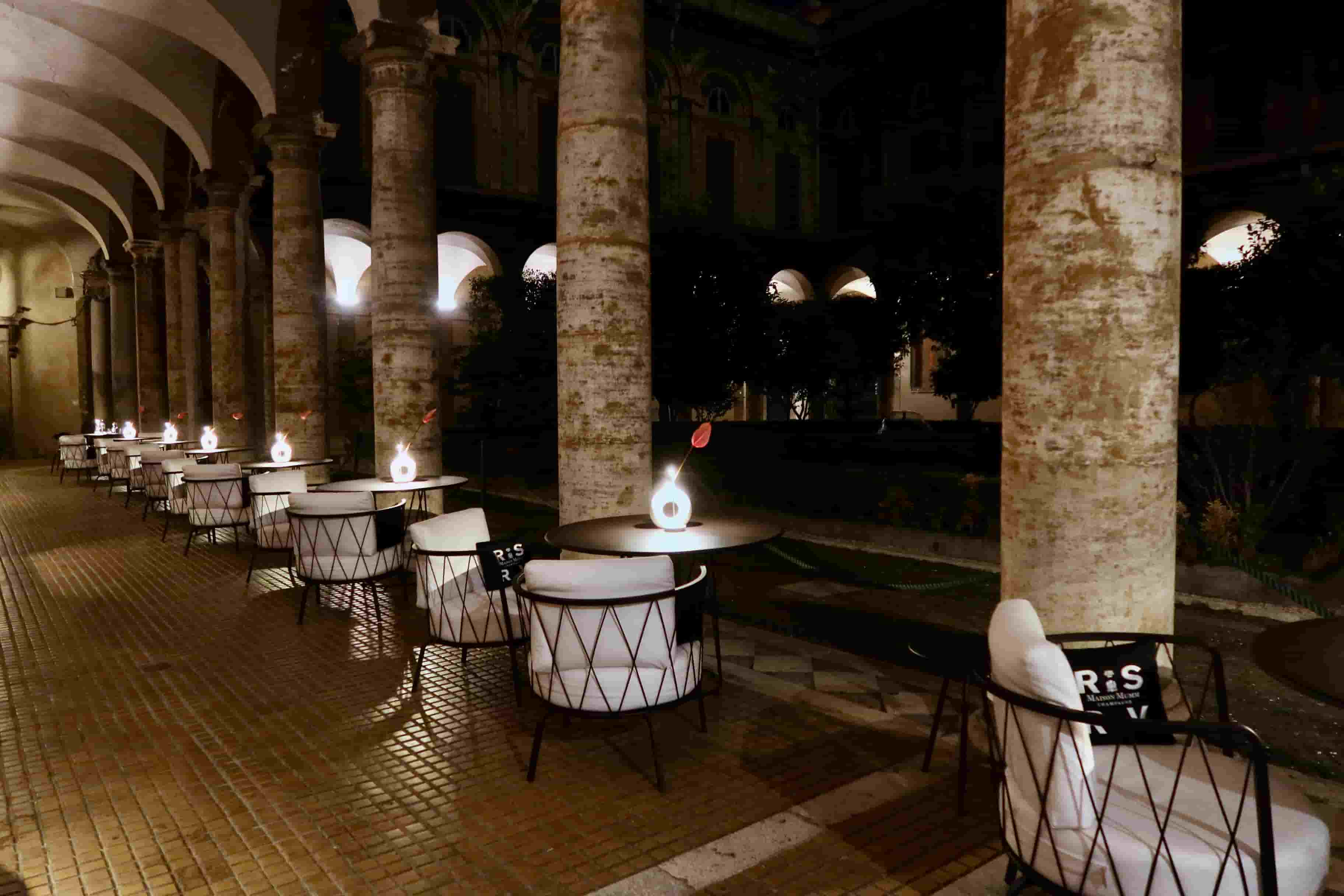 One of my favorite spots for aperitivo is this understated space inside the beautiful cloister of the Palazzo Doria Pamphilj.
One of my favorite spots for aperitivo is this understated space inside the beautiful cloister of the Palazzo Doria Pamphilj.Get more Ancient Rome at the Baths of Caracalla
The Baths of Caracalla are some of the largest thermal baths ever built in Rome.
Built between 212 and 216 CE, they cover an area of over 25 hectares and were able to host up to 1600 people at once.
Today, visitors can explore the ruins and admire the beautiful mosaics, statues, and sculptures that remain.
It's a gorgeous space and easy to visit without reserving in advance.
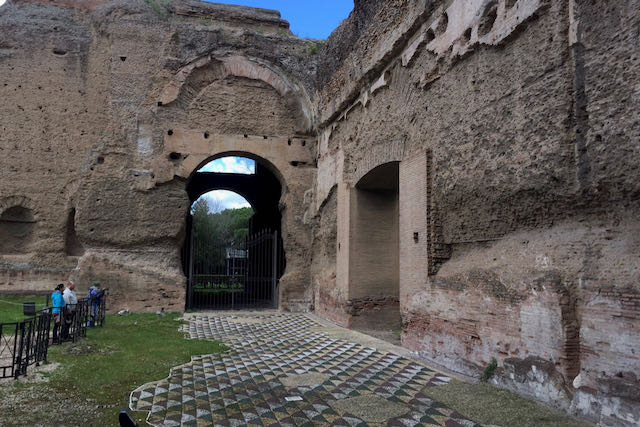 While you can easily enjoy the impressive structures of the Caracalla Baths from the outside, a visit on the inside will allow you to see some of the beautiful mosaics, still intact after nearly 2,000 years.
While you can easily enjoy the impressive structures of the Caracalla Baths from the outside, a visit on the inside will allow you to see some of the beautiful mosaics, still intact after nearly 2,000 years.You can easily visit this site on your own, or you can use their virtual reality goggles to enhance the experience.
Head underground to visit the Domus Aurea
The Domus Aurea, or Golden House, was a huge palace complex built by Emperor Nero in the 1st century.
While many say that Nero was mad, which may or may not be true, most historians agree he was an innovator where art and architecture were concerned.
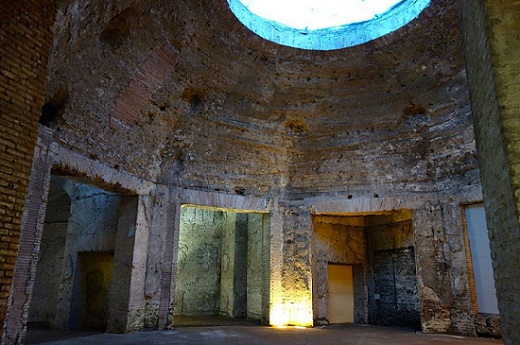 The Octagonal Room of the Domus Aurea was probably used as a dining room, where rose petals were sprinkled through the oculus (hole) in the ceiling.
The Octagonal Room of the Domus Aurea was probably used as a dining room, where rose petals were sprinkled through the oculus (hole) in the ceiling.After being buried for centuries, the ruins were rediscovered in the 15th century and are now open for visitors.
It is an active archeological site which means that if you visit it more than once, you will likely see something new each time.
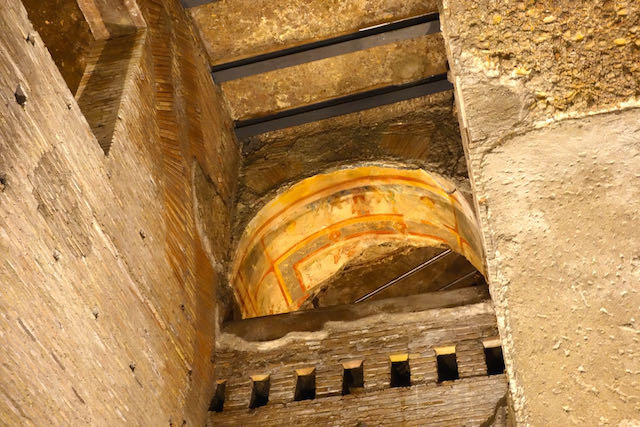 As you tour the Domus Aurea, you will be astounded at the detailed mosaics and frescoes you will see, still intact after all these centuries. Can you imagine what it might have looked like under Emperor Nero?
As you tour the Domus Aurea, you will be astounded at the detailed mosaics and frescoes you will see, still intact after all these centuries. Can you imagine what it might have looked like under Emperor Nero?Part of the visit includes a virtual reality experience, where you will see what the Domus Aurea might have looked like it its glory.
It's so real, I found myself reaching my hands out to touch it!
The Domus Aurea is without a doubt one of Rome's best underground sites, and a great thing to do on your second visit to Rome, especially if you love Ancient Roman history and architecture.
💎 Discover Rome's hidden gems 💎
Discover Rome's most underrated spots on this unique tour.
Visit the serene Protestant Cemetery, resting place of poets Keats and Shelley, beside an ancient Roman pyramid.
Wander Tiber Island and hear tales of its historical significance, then enjoy panoramic views from Aventine Hill, including a peek through the famous keyhole of the Knights of Malta.
Wander the Jewish Ghetto
Rome's Jewish community is the oldest in Europe.
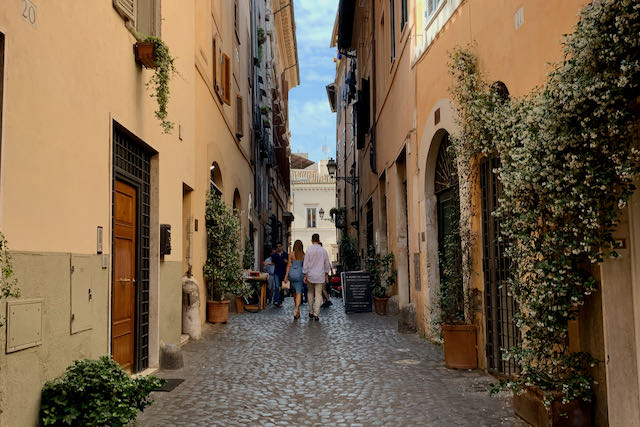
In Italy, as in other parts of Europe, the Jewish community has often gone through difficult times.
In 1555, by order of Pope Paul IV, the Jewish ghetto was created which segregated the Jewish population from the rest of Rome.
During World War II, in occupied Rome, the Jewish Quarter bore witness to a large deportation to the Nazi extermination camps.
A plaque stands today in front of the Roman ruins of Portico d'Ottavia, where the deportations took place.
As you walk around the neighborhood and many other parts of Rome today, you will find plaques embedded the floor called Stolperstein, which means "stepping stones", commemorating those who never returned.
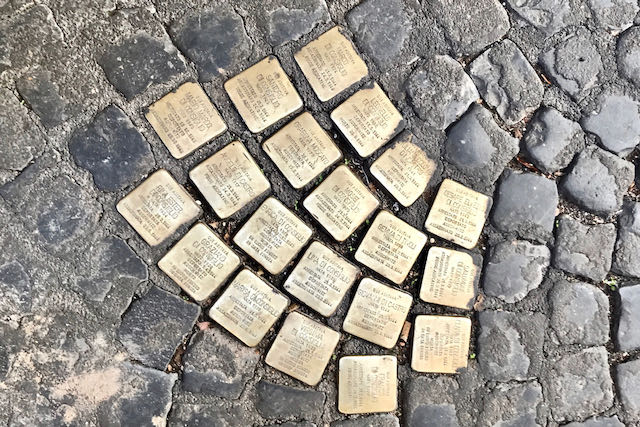 These "stolperstein", or stepping stones are in the Monti neighborhood. You will find this in every neighborhood in Rome. In the Jewish Ghetto, they are very easy to find on just about every street.
These "stolperstein", or stepping stones are in the Monti neighborhood. You will find this in every neighborhood in Rome. In the Jewish Ghetto, they are very easy to find on just about every street.Despite these horrific injustices, Jewish culture, traditions, and cuisine have thrived.
You might decide to stroll the narrow streets, do some shopping, or even visit the great synagogue and its museum.
In the evening, you'll find locals spending time enjoying a glass of wine and some of the most authentic fresh and delicious Judeo-Roman dishes in the city.
Visiting Rome's Jewish ghetto is a true Roman experience!
Learn more about the history and culinary traditions of the Jewish Quarter on this very special tour combining street food and history.
Visit the Vatican Gardens
On your first visit to Rome, you may have seen the must-see sites of Vatican City, like the Vatican Museums and Sistine Chapel, and Saint Peter's Basilica.
Many people can't fit in everything there is to see at the Vatican on a typical 3-day visit to Rome, so your second visit is an excellent time to visit the Vatican Gardens.
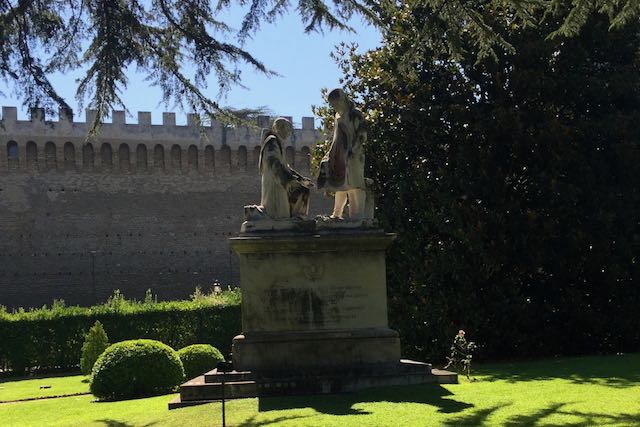
Spanning an area of more than 50 acres, these lush gardens are home to a variety of trees, plants, sculptures and magnificent fountains.
You'll enjoy the peace and quiet away from the hustle and bustle of the city and the other Vatican sites.
You'll either be on a bus with an audio guide or on a group walking tour with a Vatican guide.
As a bonus, the Vatican Museums are included in your ticket.
Jump start your trip to Rome with a free ebook 😀
Sign-up to our free newsletter and receive our Quick Start Guide to Rome ebook which share's everything you need to know to plan the perfect trip to the Eternal City 🙌
Take a cooking class or food tour
A fun experience for the whole family is learning more about Roman food culture.
A great way to experience this first hand is by taking a cooking class and learning how to make classic Italian dishes like pizza, pasta, and gelato.
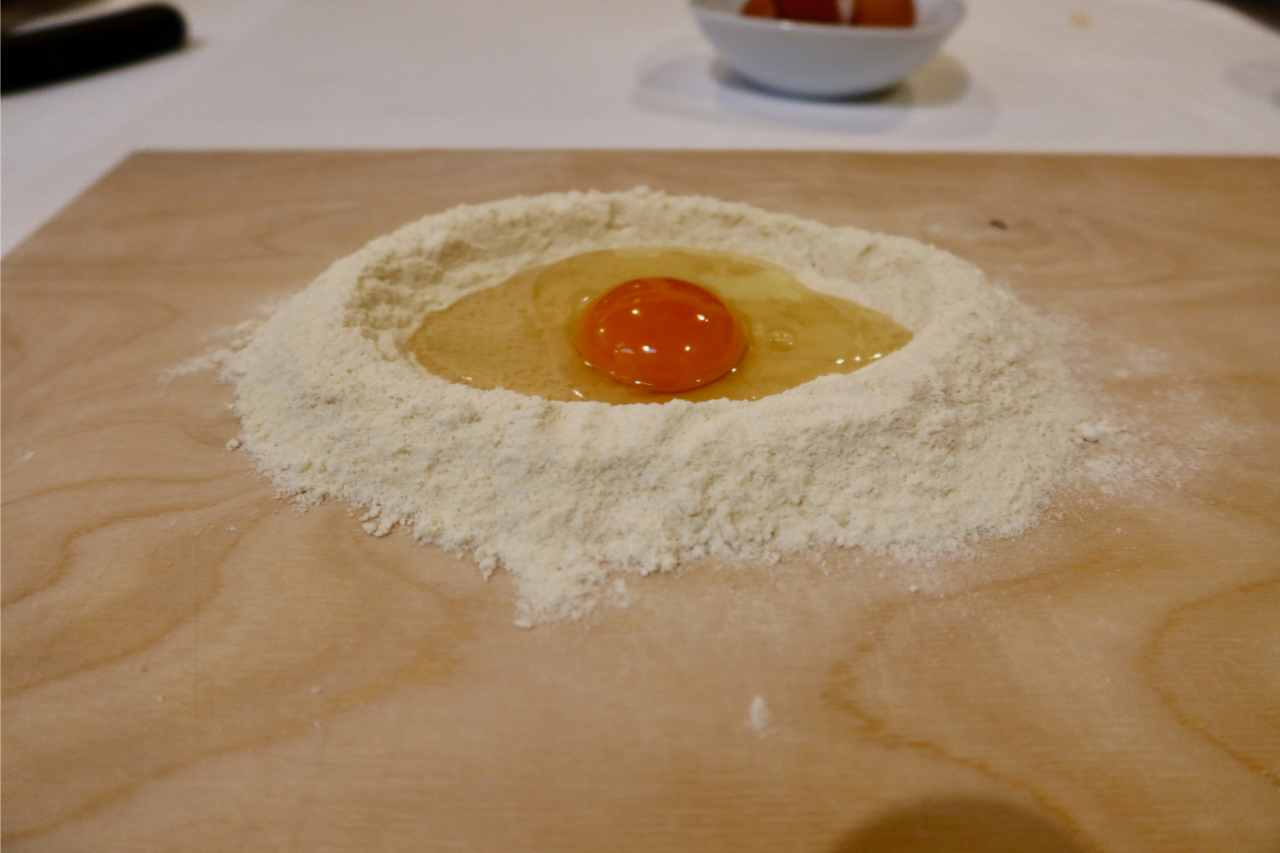 Many cooking classes teach you to make fresh pasta using egg and flour, like this one with Walks of Italy.
Many cooking classes teach you to make fresh pasta using egg and flour, like this one with Walks of Italy.You could also join one of the many food tours and indulge in some of Rome's small food markets and delis in local neighborhoods.
Usually, you'll try local specialties such as supplì (fried rice balls coated in breadcrumbs), cacio e pepe (pasta with cheese and pepper), and carciofi alla Romana (Roman-style artichokes).
Some tours will show you around the famous fresh food markets of Campo di Fiori and Testaccio before teaching you how to cook your delicious ingredients.
Others will wander through the city, helping you to indulge in local wine on rooftop bars, even places some locals don't know about!
🙌 See The Capitoline Museum Your Way 🙌
Enjoy this private tour of the Capitoline Museums with priority entry and expert commentary on its most celebrated masterpieces.
Visit the Capitoline Museums, the oldest in the world
The Capitoline Museums are the oldest museums in the world and a must-see tourist destination when visiting Rome the second time.
 In the first courtyard you visit of the Musei Capitolini, or Capitoline Museums, you'll find these pieces of a once enormous statue of Roman Emperor Constantine.
In the first courtyard you visit of the Musei Capitolini, or Capitoline Museums, you'll find these pieces of a once enormous statue of Roman Emperor Constantine.Housed across two Renaissance buildings on Capitoline Hill, the museums feature a collection of sculptures, coins, jewellery, paintings, and other artefacts showcasing Rome's history.
Don't miss the cafe with views of Roman rooftops (which you can access even without going inside the museums.)
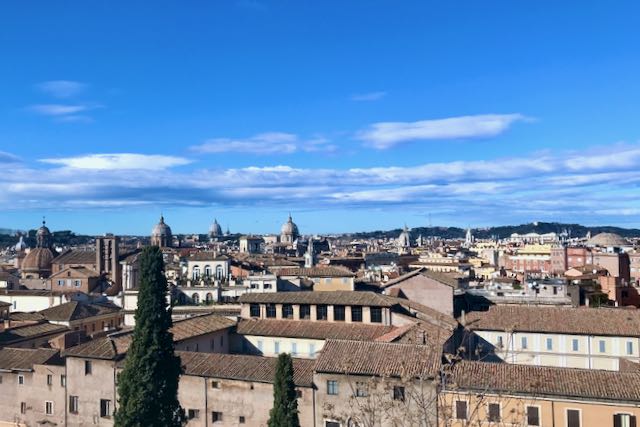 I love the Roman rooftop views from the Terrazza Caffarelli inside the Capitoline Museums.
I love the Roman rooftop views from the Terrazza Caffarelli inside the Capitoline Museums.Discover the Villa Torlonia and its park and wonderful museums
The Villa Torlonia was once a princely home, and later Mussolini's party palace.
Today the villa is home to several museums.
 Most Rome visitors don't get a chance to visit the Villa Torlonia but it's a wonderful museum with a lot to see.
Most Rome visitors don't get a chance to visit the Villa Torlonia but it's a wonderful museum with a lot to see.These include the Casina delle Civette (House of Owls) which features amazing Art Nouveau furnishings, and the newly opened Serra Moresca, an outdoor garden with a Moorish influence.
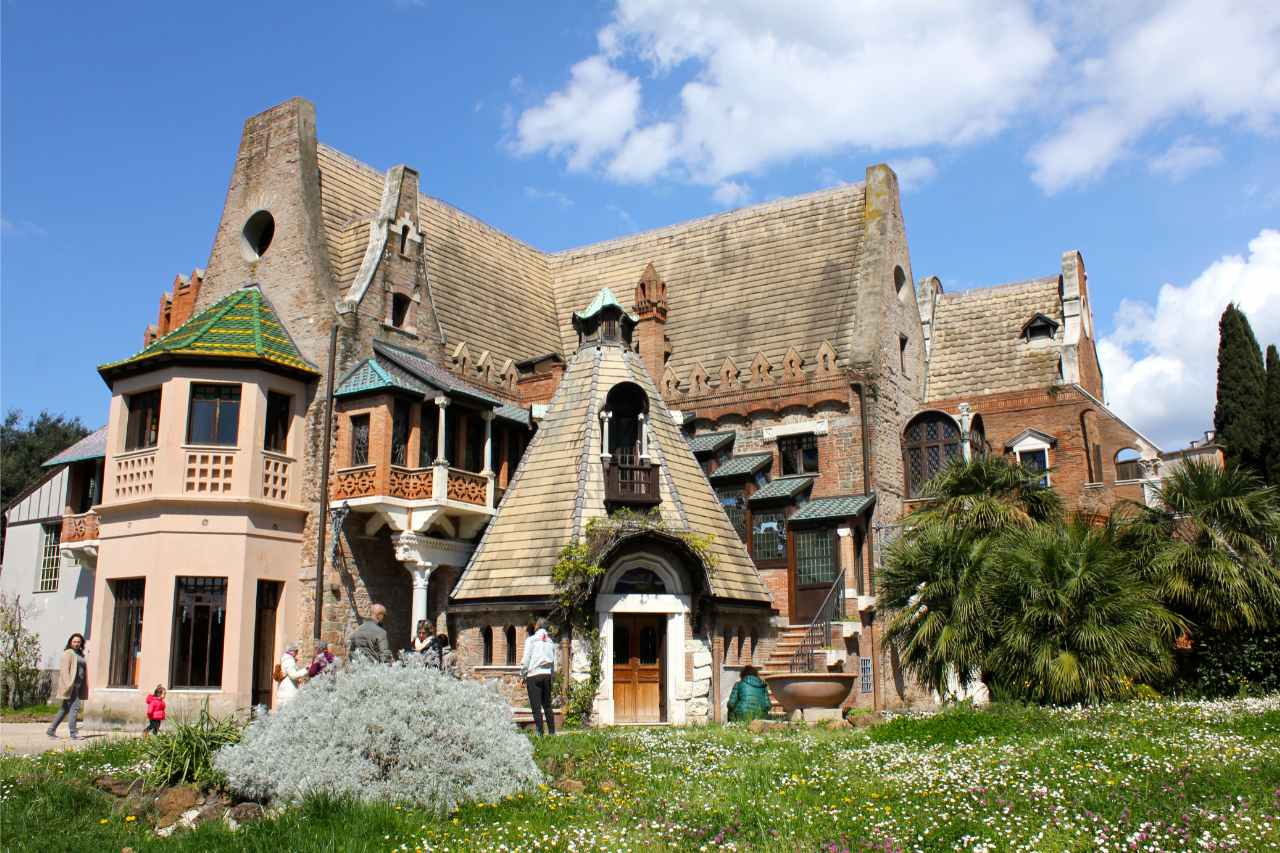 One of my favorite "modern" buildings in Rome is this fanciful "Casina delle Civette", or House of the Owls. Does it remind you of a Harry Potter scene?
One of my favorite "modern" buildings in Rome is this fanciful "Casina delle Civette", or House of the Owls. Does it remind you of a Harry Potter scene?Inside the main building, you will find sumptuous rooms with neoclassical and futuristic art and architecture.
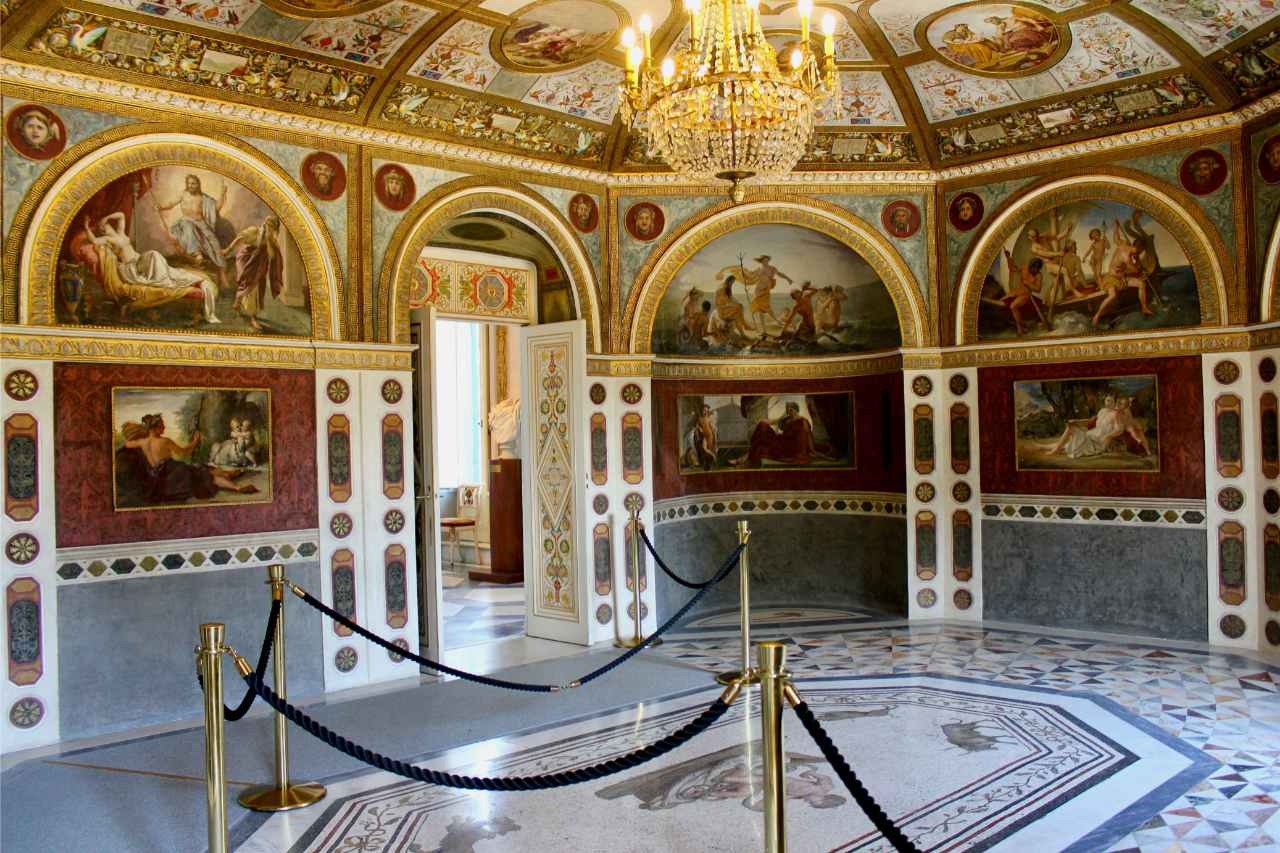 Each room in this once-private villa is more beautiful and unusual than the next. I particularly love the mosaics on the floor of this room.
Each room in this once-private villa is more beautiful and unusual than the next. I particularly love the mosaics on the floor of this room.The park also features lovely gardens, fountains, ponds, and sculptures where you can spend some time enjoying nature.
Many Romans come to the park (free) just to relax, picnic, stroll, and generally hang out.
There's also an outdoor café.
 I think the café inside Villa Torlonia park is one of the loveliest and quietest places to enjoy a coffee or lunch break away from bustling, busy Rome.
I think the café inside Villa Torlonia park is one of the loveliest and quietest places to enjoy a coffee or lunch break away from bustling, busy Rome.The perfect 3-day itinerary in Rome
Trying to figure out how to organize your visit to Rome? I've got the perfect 3-day itinerary for first-time visitors (or those who have not been here in a while.) It works for a 2.5 day visit as well.
In my 3-day itinerary, you'll see all the major must-see Rome attractions like the Vatican, Colosseum, Trevi Fountain, Pantheon, Piazza Navona, Spanish Steps, and much more.
And if you have more time, or want suggestions for extra/other things to do, you'll find that there too.
Visit my page with the best 3-day itinerary in Rome for first-timers.
No matter what season you visit Rome, here are 4 essential things we recommend never leaving home without:
Get to know Trastevere
Trastevere literally means "across the Tiber river."
It would be easy to use adjectives like charming, bohemian, and off-the-beaten-track, but Trastevere is much more than that.
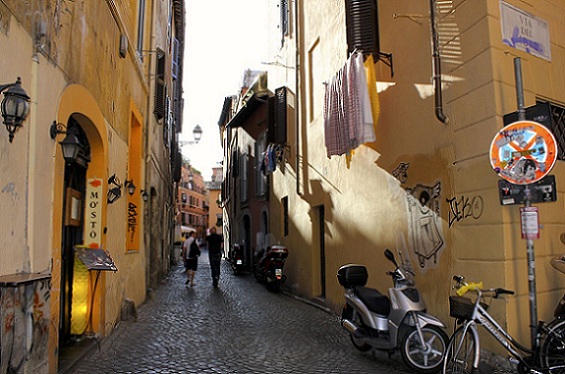 Getting lost in the winding backstreets of Rome's Trastevere neighborhood is a great way to spend an afternoon or even a whole day.
Getting lost in the winding backstreets of Rome's Trastevere neighborhood is a great way to spend an afternoon or even a whole day.Trastevere is a real local neighborhood full of a rich and long history, but to the casual visitor, it might just be a lovely place to wander and enjoy the scenery.
It's the perfect place to explore winding cobblestone streets, picturesque piazzas, and trendy bars and restaurants.
Trastevere also offers plenty of gorgeous churches such as Santa Maria in Trastevere, arguably the oldest church in Rome.
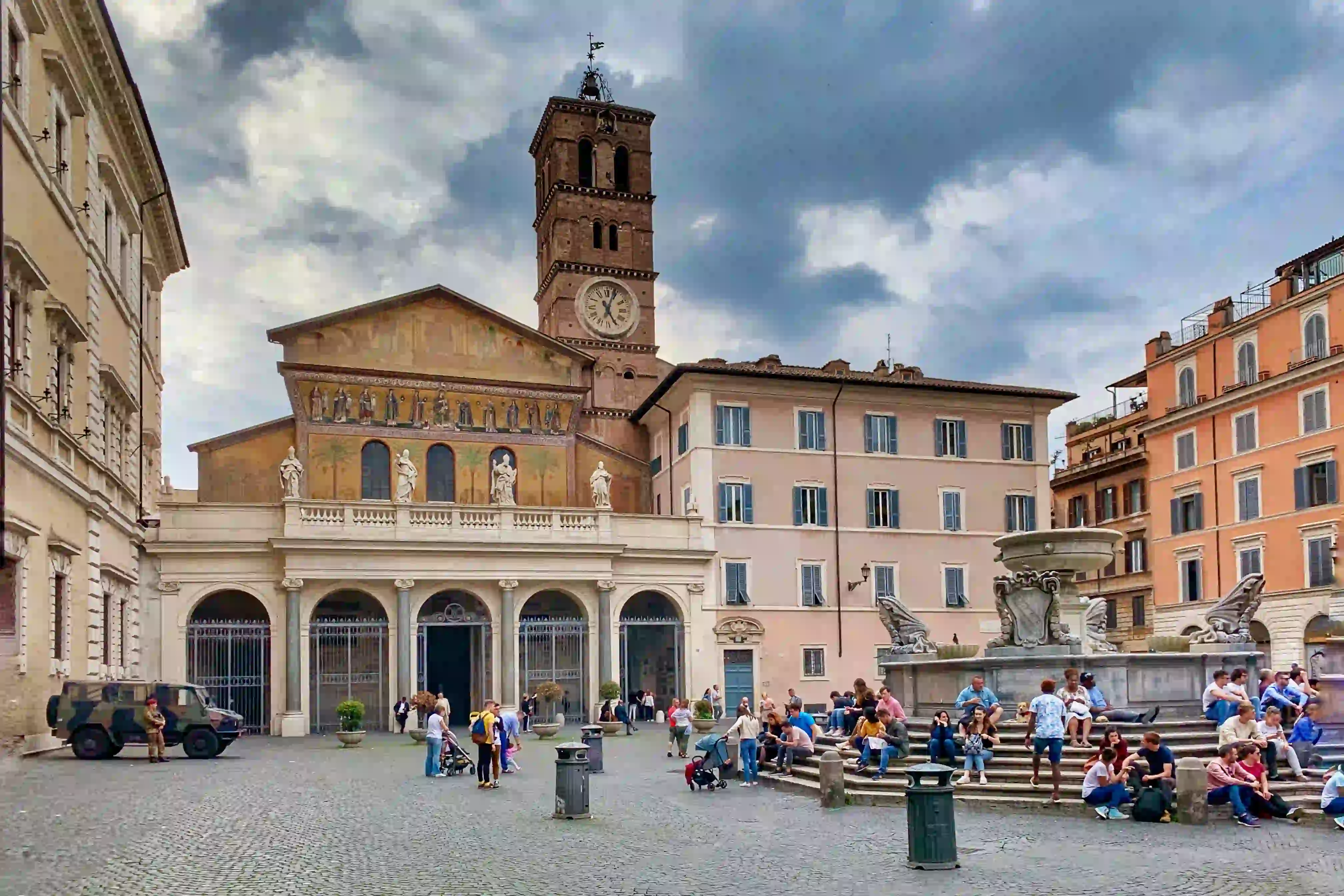 It's worth even visiting the piazza of Santa Maria in Trastevere, but the basilica is truly amazing and deserves a visit, too.
It's worth even visiting the piazza of Santa Maria in Trastevere, but the basilica is truly amazing and deserves a visit, too.If you can, head inside to admire its beautiful Byzantine mosaics and Cosmatesque floor.
 The Byzantine mosaics of Santa Maria in Trastevere are jaw-droppingly beautiful, some of the most stunning in all of Rome.
The Byzantine mosaics of Santa Maria in Trastevere are jaw-droppingly beautiful, some of the most stunning in all of Rome.You could also include Gianicolo Hill, part of Trastevere that sits high above the city, offering stunning views, but also plenty of history, in particular about the Risorgimento - the movement that unified Italy after the long war of 1855 - 1870.
 This monument to Giuseppe Garibaldi sits high atop the Giacolo Hill, another part of Trastevere and an important place in Rome's recent and also ancient history.
This monument to Giuseppe Garibaldi sits high atop the Giacolo Hill, another part of Trastevere and an important place in Rome's recent and also ancient history.Get to know the Trastevere neighborhood with this sunset food and wine tour, showing you how to feast the Roman way!
See inside the Roman Houses at Celio
A visit to the Roman Houses at Celio offers a fascinating glimpse into life in Rome in the 1st and 2nd centuries.
You'll find ruins of a Roman neighborhood and several other artefacts.
As you make your way through the rooms, you'll find intensely bright frescoes, intact intricate mosaics, and well-preserved Roman architecture of the time.
There is also a wonderfully curated small museum in the back.
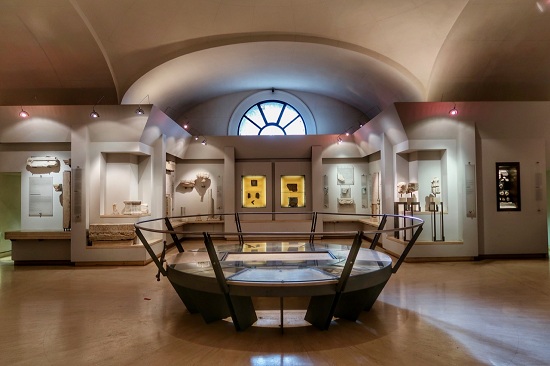 I love this small but extremely well-curated museum at the back of the Roman Houses of Celio.
I love this small but extremely well-curated museum at the back of the Roman Houses of Celio.Ready to plan your trip?
Book your train
Planning to travel between cities in Italy and other parts of Europe?
Use Trainline to see all the different options available across the different rail companies.
Find your hotel
Find your perfect place to stay in Rome.
Use Booking.com to choose between hotels, guesthouses, and self-catering apartments in neighborhoods throughout the Eternal City.
Buy your TurboPass
Purchase the convenient Turbopass and visit all of Rome's top attractions including the Colosseum, Pantheon, and Vatican.
With one handy pass, it's all included.
Check out the Mausoleum of Augustus and the Ara Pacis
The Mausoleum of Augustus is one of the most impressive monuments in Rome, purely because of what it is - the burial place of Rome's first emperor, Octavian Augustus.
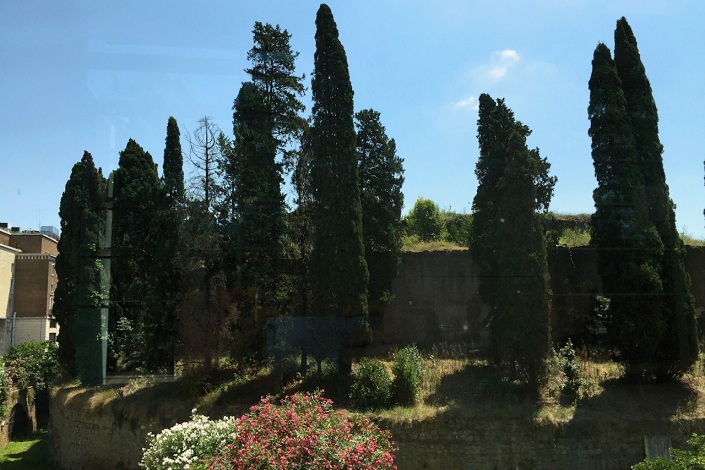 The Mausoleum of Augustus does not look overly impressive from the outside, but is very much worth a visit!
The Mausoleum of Augustus does not look overly impressive from the outside, but is very much worth a visit!It was originally built by emperor Augustus to commemorate himself and his family and later stored the ashes of subsequent Roman emperors and their families.
It fell into complete abandon but is currently being restored and when finished, will provide a new, fantastic museum to visit in Rome.
Visit my dedicated page here, which I will update when the site becomes visitable.
Nearby, you'll find the Ara Pacis, the Altar to Peace, also made under Emperor Augustus.
This stunning marble monument is housed in a beautiful building that allows the light to showcase the intricate carvings and sculptures.
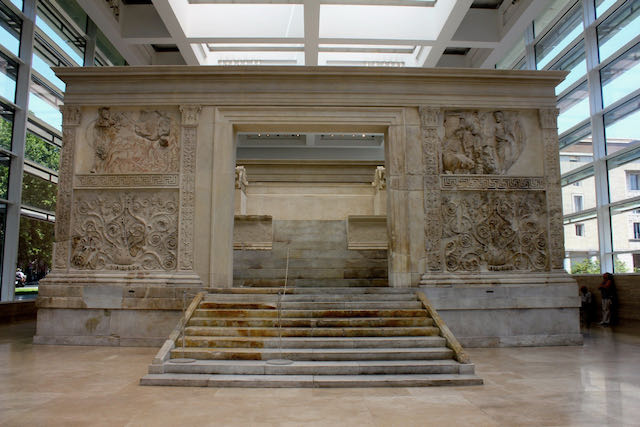 It's worth going inside this museum to visit the Ara Pacis, but there are other things in the museum that add to the experience.
It's worth going inside this museum to visit the Ara Pacis, but there are other things in the museum that add to the experience.Life of Emperor Augustus
Want to learn more about the life of Rome's first emperor, Octavian Augustus?
I could not put down John Williams' "Augustus", a fictional recounting of Augustus' life from the moment he heard of his uncle Julius Caesar's assassination in 44 BCE.
The book tells the story through imagined epistles and it's a fantastic and easy way to absorb the history of this pivotal moment in Rome's history.
One of my favorite things inside this museum is the plastic model showing Ancient Rome at the time of Augustus, and where the Pantheon, Altar to Peace, and Augustus' obelisk were in relation to each other in the Campo Marzio, or Field of Mars.
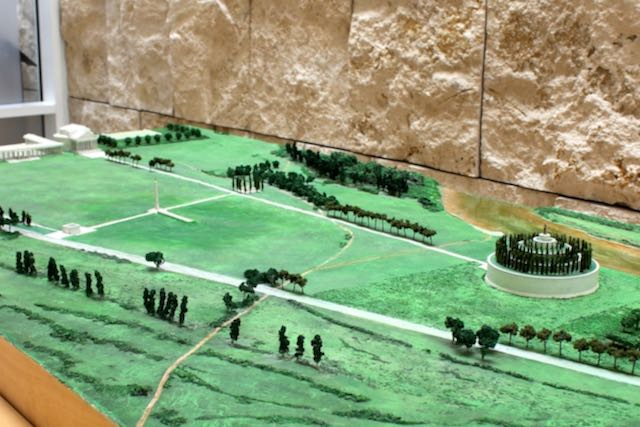 This plastic model showing where the pantheon stood in relation to Augustus' mausoleum is very interesting for those interested in understanding the Pantheon's history.
This plastic model showing where the pantheon stood in relation to Augustus' mausoleum is very interesting for those interested in understanding the Pantheon's history.Fill up your senses with art at the Galleria Borghese
I include the Galleria Borghese on my 3-day Rome itinerary as an option, but I often find many people don't have time for it if they only have 2-3 days, but I do consider this museum a must-see in Rome.
Situated in the Villa Borghese park, the Galleria Borghese contains one of the most impressive collections of Renaissance and Baroque painting and sculpture in Rome.
Many of the pieces come from the original collection of Scipione Borghese (1577-1633) who began to intensely acquire works of art including pieces by Caravaggio, Titian, and Bernini.
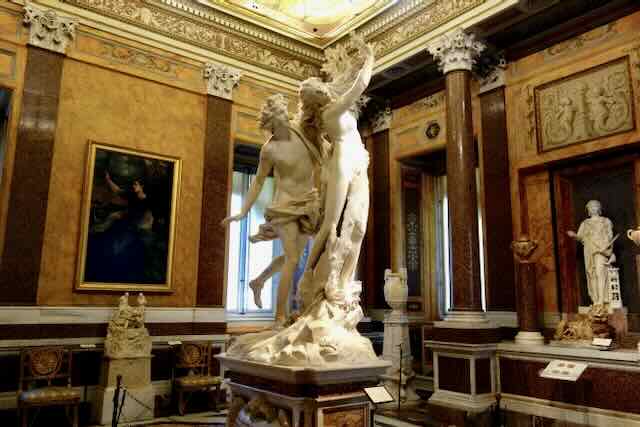 The sculptures by Gian Lorenzo Bernini, like his Apollo and Daphne, are among his finest works and make a visit to this gallery worth it by themselves. But then there are also the Caravaggio paintings...
The sculptures by Gian Lorenzo Bernini, like his Apollo and Daphne, are among his finest works and make a visit to this gallery worth it by themselves. But then there are also the Caravaggio paintings...After visiting the gallery, you can have fun while wandering through the Villa Borghese, the third largest park in the Eternal City.
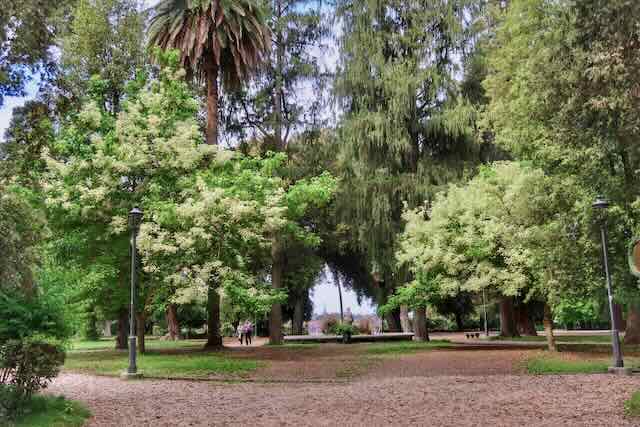 Whether or not you visit the Galleria Borghese, the Villa Borghese park is a wonderful place for a stroll if you're looking for some green space and quiet time.
Whether or not you visit the Galleria Borghese, the Villa Borghese park is a wonderful place for a stroll if you're looking for some green space and quiet time.Head out of town for a day trip
If you're looking for a change of scenery when visiting Rome for the second time, why not head out of town for a day trip?
You could visit the ancient Roman port town of Ostia Antica, preserved in excellent condition with many buildings, sculptures, and mosaics still in place, and a bit less of a trek than the other very popular Rome day trip to Pompeii.
The nearby towns of Tivoli and Orvieto are both easy to reach on the train.
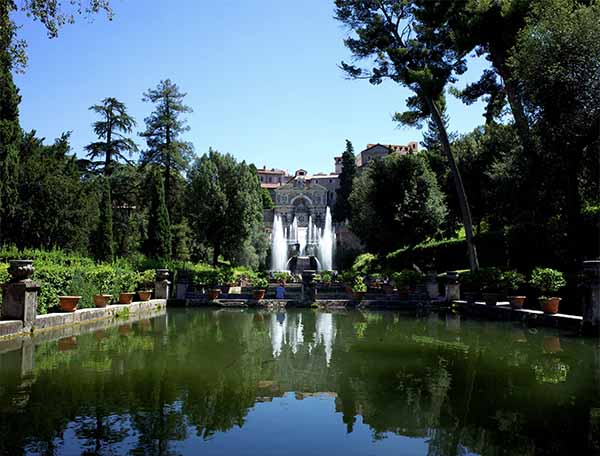 It's easy to visit the magnificent gardens of the Villa d'Este in Tivoli, which is not far from Rome and makes for an easy half-day or full-day trip.
It's easy to visit the magnificent gardens of the Villa d'Este in Tivoli, which is not far from Rome and makes for an easy half-day or full-day trip.You might consider a day trip to the countryside where you can enjoy lunch and wine-tasting, or an excursion to the pope's gardens at Castel Gandolfo.
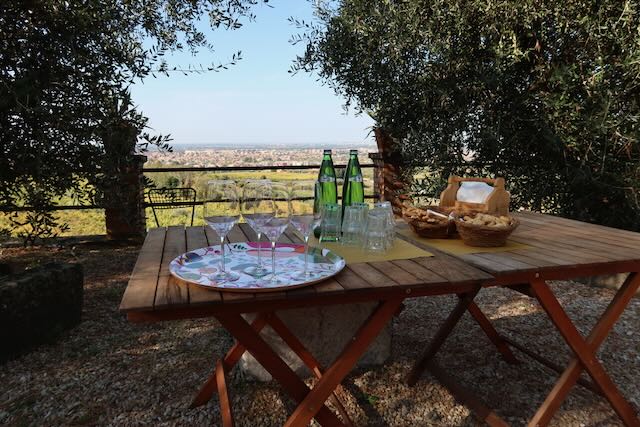 If you're looking for something different, in a very short time, you can be enjoying a fun tour of a vineyard and winery not far from Rome, along with lunch and wine samples.
If you're looking for something different, in a very short time, you can be enjoying a fun tour of a vineyard and winery not far from Rome, along with lunch and wine samples.There are many wonderful places to see within 2 hours of Rome, including beaches, Etruscan tombs, small charming towns, castles, and much more.
Popular Day Trips from Rome
Take a look at our page here for lots more inspiration.
Frankly, the list of things to do on your second or twentieth visit to Rome is literally endless.
As the Romans say, and as I've quoted often on this site, "A lifetime is not enough."
Non basta una vita.
I hope with this list I've given you some new places to explore in Rome the second time!
Romewise's Top Travel Resources
Ready to book your trip to Rome? Take a look at these helpful links to companies we use and trust:
- Keep your travel spending simple with the Wise card, which removes all the worry about exchange rates and high transaction fees all over the world
- Search for and book your perfect accommodation
- Our complete guide to what to pack for Rome
- The number one travel accessory, a multi-point travel adapter and voltage converter
- Browse a huge range of tours in Rome and beyond
- Experience unique tours and special access to Rome's most popular sights
- Protect yourself with comprehensive travel insurance
Within this post there are some affiliate links for products and services. For more details about our affiliate policy click here.
Get your 100% free Rome trip planner now!
Simply sign-up today for our free newsletter and get the Romewise Quick Start guide to Rome:
We are committed to respecting your data. Click for our Privacy Policy.
Comments? Questions? Suggestions?
Please come over to the private Romewise Facebook group and join in the conversation.
You will often find me there, happy to answer your questions / comments!
You will also meet other Rome lovers and experts, too.
What are you waiting for?
- Romewise Home Page
- What to Do in Rome
- rome the second time


